Email marketing has been one of the Business’s most influential and significant tools. However, in digital landscape, it is never “A walk in the park.”
Challenges include low email open rates to improper audience segmentation, and emails ending up in spam folders etc. These obstacles must be addressed before initiating your email campaign.
Like any other phenomenon, these hurdles in running your business could be overcome by using proper Email marketing practice.
While it has countable classifications under it, the most common classification based on industry are B2C and B2B Email Marketing.
In coherence with the title, we move further on one of the email marketing classifications – B2B Email Marketing.
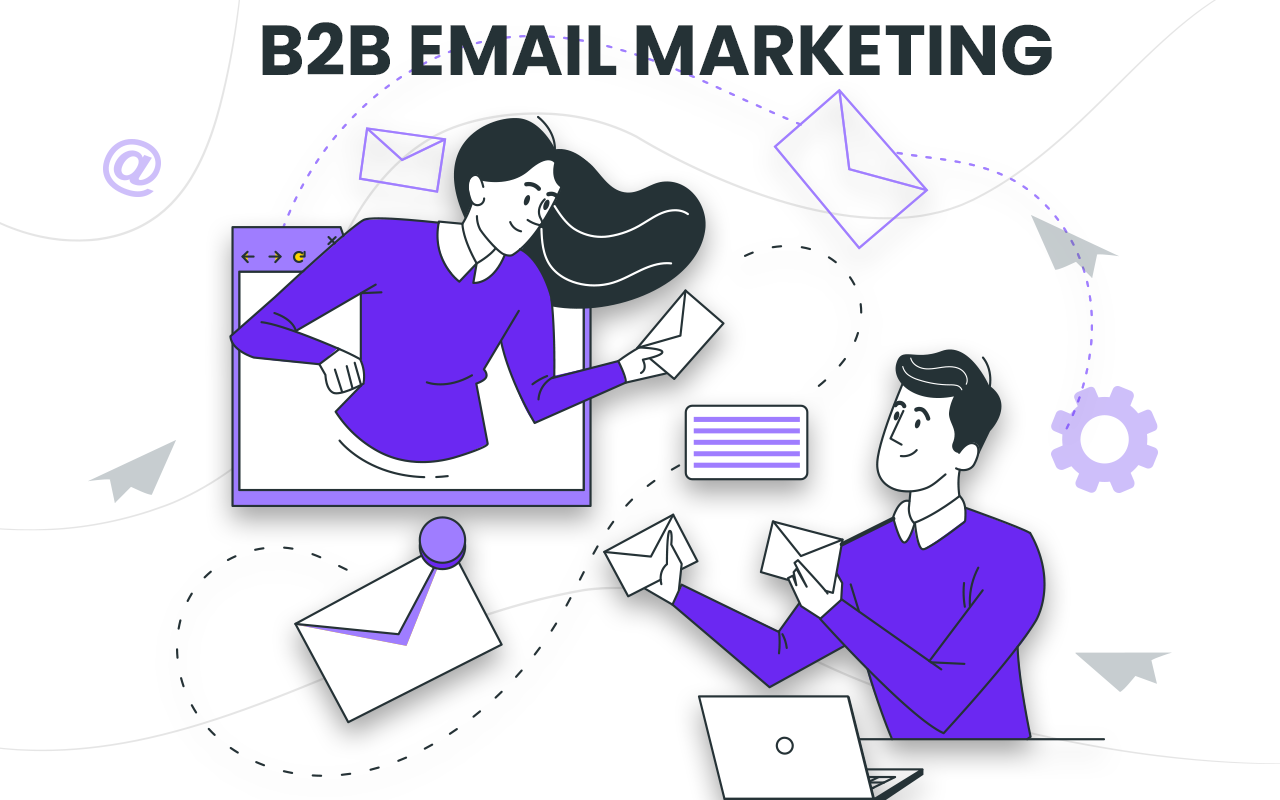
Business-to-business (B2B) marketing is a method of promoting one Business’s product or service to another business in order to create brand awareness, nurture relationships, and generate revenue.
What is B2B Email Marketing?
B2B Email marketing is the practice of promoting your business to other businesses via email. It goes for both – products as well as services. The purpose of it is to nurture business relation, increase brand awareness, and at the end generate sales.
It is affordable customizable and can capture demand through different types of email for updates, announcements, product releases, and outbound marketing materials to generate brand awareness and potential leads.
The Email Campaign targets audiences through,
- Promotional emails.
- Newsletter emails.
- Survey emails.
- Milestone emails.
- Welcome emails.
- Re-engagement emails.
- Documents and other materials.
Here, we proceed further on how B2B email marketing works and what their inferential status is on Lead generation and capitalization lattermost.
You might still think about how email marketing could turn the tables in the B2B realm, and a question follows:
Will I succeed and grab attention through emails?
Difference between B2B Email Marketing and B2C Email Marketing?
What are B2B email marketing importance?
What are the best strategies to make it successful?
Viola! You have reached the right space to learn more about B2B Email Marketing,
The 5Ws of B2B Email Marketing
Have you ever wondered how the 5Ws – When, Where, Who, Why, What; provide us with the clarity of what we do and are about to do in the future for our Business?
In this case, we are about to see how influential and essential these 5Ws are for your Email Marketing Campaigns,
When:
The question typically arises as when to start your B2B email campaigns to get most of its pulp. According to HubSpot, The best timing to run them would be around 9 am-12 pm.
Who:
The “Who” in email marketing refers to the C-suite, including the COO (Chief operating officer), Vice president, CFO (Chief financial officer), CEO (Chief executive officer), etc., are the decision makers and target audience in B2B industry.
What:
This “W” is already served on your plate, and to revise it, B2B email marketing comes under marketing that involves one Business pushing its products or services to other companies through email.
Examples: Welcome emails, transaction emails, and retention emails.
Where:
The “Where” factor here is like an endless sea. It provides you with where to focus, where not to focus, where to drop your campaign, etc. The “W” here discusses where your end email should reach and where to score your potential lead.
The endpoint of your campaign is the decision-makers inbox. You can further expand your audience, location, and industry to wherever you experience a vast market with less supply.
To improve your emails, a proper subject line, precise and engaging content, on-point infographics, clickable links, CAN-SPAM, etc., would do better.
Why:
We have discussed the other 4Ws, which might give you the precise answer to “Why” you should opt for B2B email marketing. There are multiple reasons to support the statement.
The most relevant reasons are its affordability and personalization. The Firm’s ROI increases by generating MQLs (Marketing Qualified Leads) and SQLs (Sales Qualified Leads) from the campaigns.
And since the campaigns are run worldwide, you could expand your current market and expect numerous opportunities in the future.
Now, how would B2B Email Marketing differ from B2C Email Marketing? Are they both different from their roots?
B2B VS B2C Email Marketing
Beginning with Email Marketing, B2B and B2C Email marketing are two different approaches. While this pair works based on many criteria and situations, All that unites them is the successive drive to create demand for a firm’s capitalization.
Below is a comprehensive explanation of how they remain the “chalk and cheese” of businesses:
Audiences and Messaging:
The audiences differ hugely between B2B and B2C Email Marketing. B2B email marketing involves the marketing between businesses through emails to create brand awareness, retain customers, and generate demand.
At the same time, B2C Email Marketing deals with businesses’ direct consumers or clients to generate demand to sell their service or product.
Tone and Voice:
Either of them match in any circumstance; B2B predominantly pushes through a formal, professional tone with precise market research, while B2C pushes through a casual tone with an emotional connection with the consumer to make the purchase.
Design and Layout:
The informative and visually appealing design and Layout work has proven to be productive for both B2C and B2B Email Marketing.
If the design has a professional, direct approach focusing more on content, data, and a simple yet effective layout, you have received a B2B Email.
If the same comes with a visually appealing design with wits and sarcasm to have an in-vogue, you have received a B2C Email.
Timings:
It may not look important to remember before starting the Email Marketing Campaign, but it is pivotal in successfully running it.
As mentioned earlier, the best timing to send B2B Email is Monday(s) and Thursday(s), around 9am-12 pm.
According to Brevo, It is advisable to go on weekends around 10 am- 3 pm for B2C Email marketing for better overall click volumes and engagements.
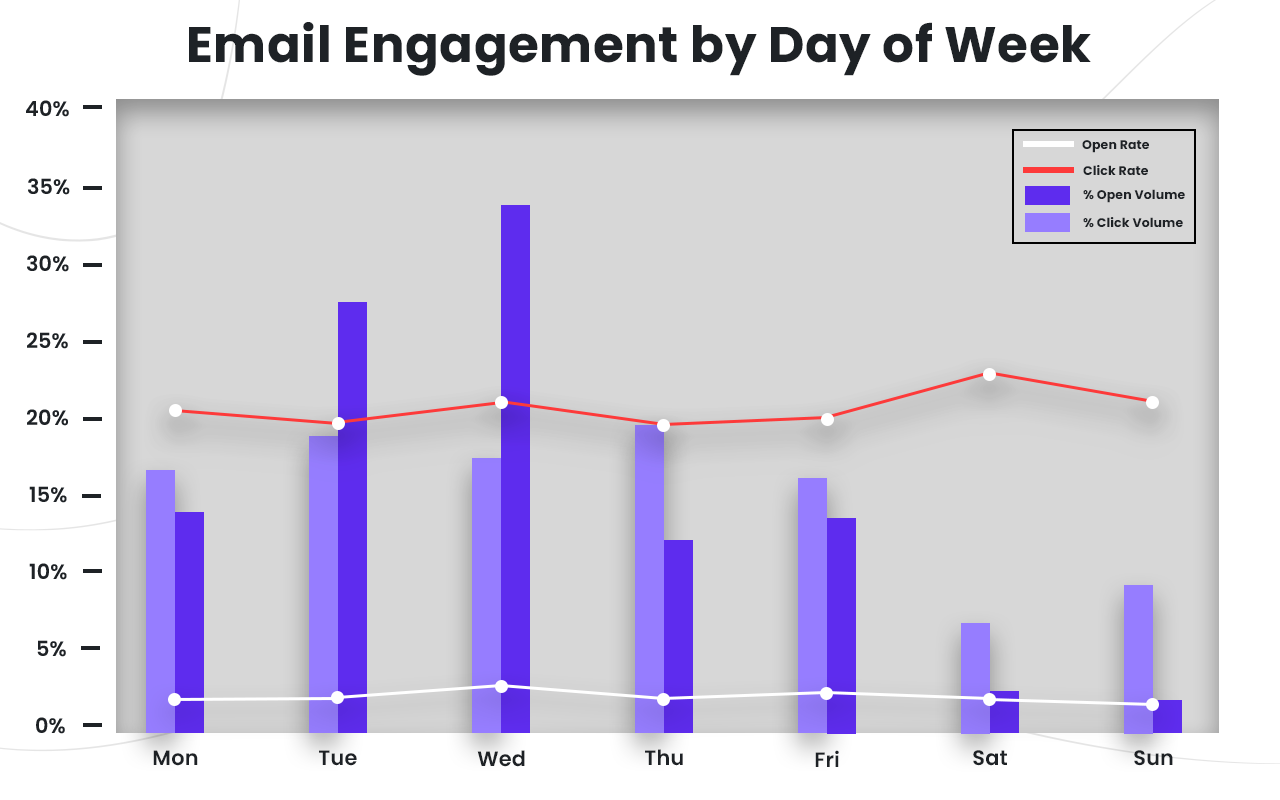
Buying Cycle:
It is often a misconception among us that all we need to do is convince the user to buy the product, but that has never been the procurement process between businesses.
As already known, B2C email marketing focuses directly on the customer so that their end-user and decision-maker remain in the same persona.
At the same time, B2B has a different and layered procurement process; it involves not only a single decision-maker but also multiple steps, multiple personas for purchase or obtainment and numerous end users.
| B2B Email Marketing | B2C Email Marketing |
|---|---|
| Typically, more formal and professional | Shorter, consumer-oriented, visually appealing content |
| Focuses on providing industry insights, research, and statistics | Promotes immediate actions like purchases |
| Addresses specific pain points and provides solutions to the problems faced by businesses | Can gather quality databases for email communications for the general audience and minimal buying steps |
| Longer sales cycles | Shorter sales cycles |
| More technical content with a formal tone | A more casual, conversational tone |
| Clear and concise language | More creative and engaging language |
| More generalized content | Personalized content |
| Higher open rates | Lower open rates |
How important and crucial can this B2B Email marketing be to your business that someday it fills up your pocket?
Importance and Benefits of B2B Email Marketing
The investment in B2B email marketing remains lower or non-existent compared to other paid campaigns, conveying and proving its unique significance in marketing.
We rely on emails more than we could imagine, making it one of the influential communication channel for business.
Like every other Marketing strategy, B2B email marketing has its own key benefits, such as:
Affordability and Increase in ROI
ROI determines the company’s growth and sustainability. Since these campaigns run at lower costs, depending on business to business, their revenue comes with minimal investment and heightens the ROI.
“Survey: 50% of B2B Marketing Leads with the Highest ROI Now Come from Email”
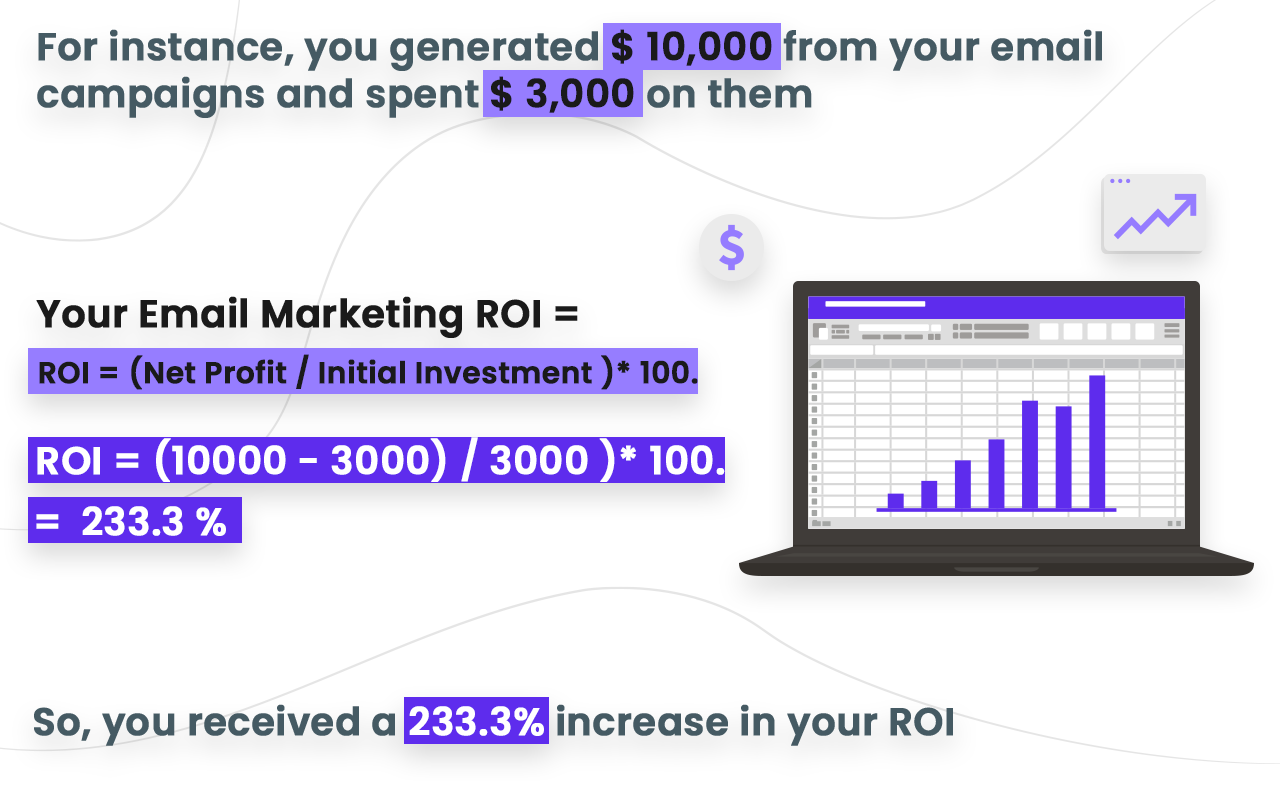
Boosted Brand Awareness
Through emails, audience gets to know who you are and what you do. If you keep them posted regularly and properly, you are no longer a regular email, But a reputed brand to them.
B2B Email marketing specifically heighten the brand awareness by direct and personalized communication to the audience. It ensures the businesses to share their brand story, their roadmap to success, value and offering, nurturing trust and familiarity among the clients.
Ex: Case study and Reaching milestone emails.
Customer Retention and relationship
Nurturing your customers constantly with your company’s updates, upcoming products, and added features, or even making them feel valued, improves their trust in the company and makes them return for the future too.
It also encourages existing customers to purchase by providing them with exciting rewards, offers, and takeaways.
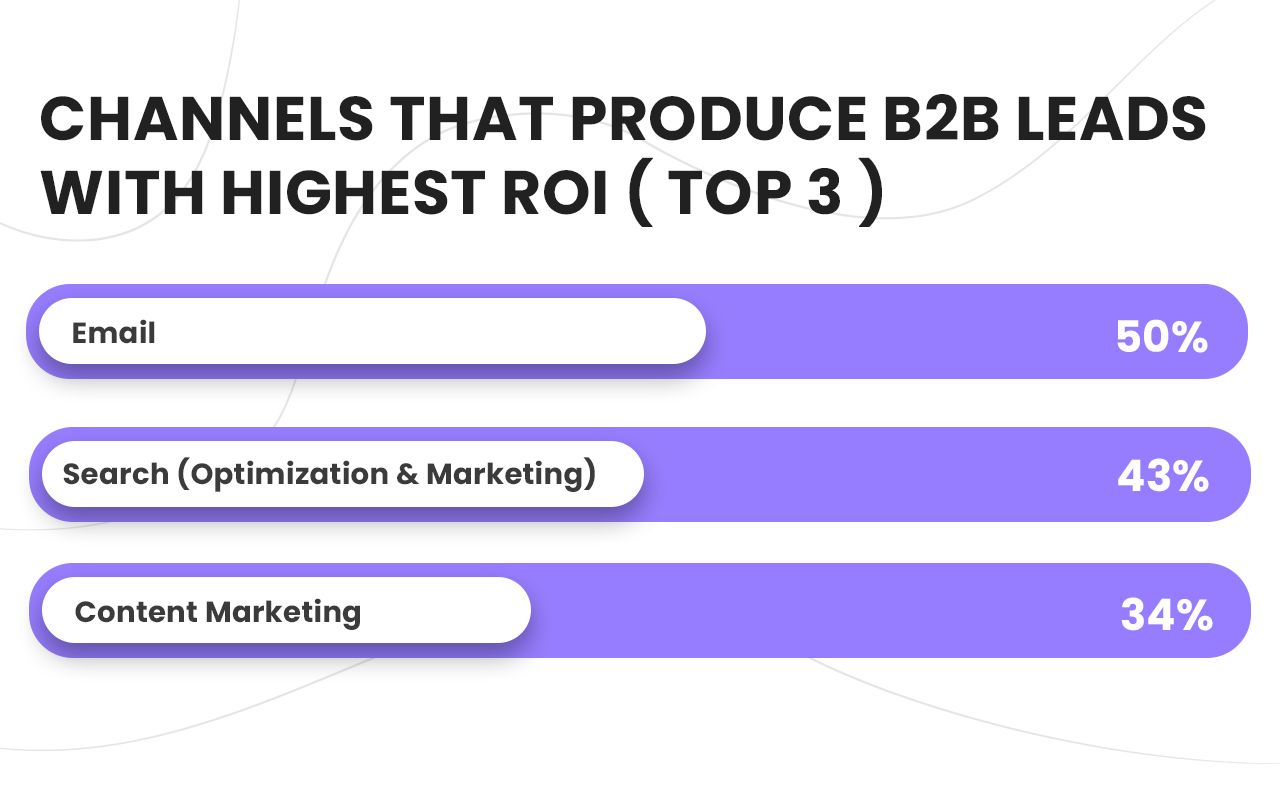
Mobile Friendly
According to a recent study from Litmus, 60% of all the emails sent were opened through a mobile device. The rise of these gadgets paved the way for the growth of multiple businesses.
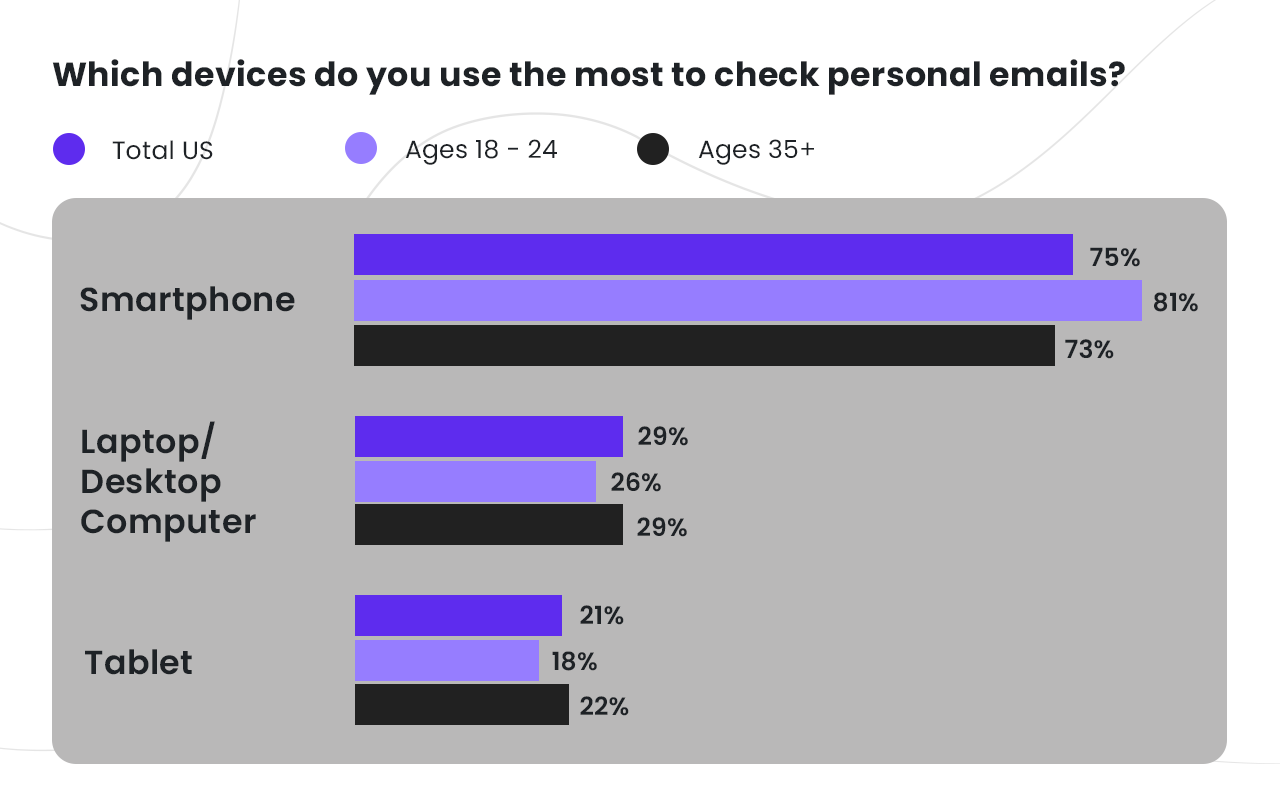
The chances of getting a genuine lead from this medium might elevate your business the next level.
Personalized Content and Offers
While working and targeting prospective customers from different backgrounds, the content can be personalized according to buying behaviour, persona, region, industry, age group, etc., so each customer learns about the brand and proceeds further with the purchase.
On top of all this personalization, the demand captured through the campaign remains positive.
Ex: Yearly sale email, Awareness email, Case study email.
Integration with Marketing Channels
You could grow your audience number through social media, a dependable medium to drive leads in modern times.
Integrating the B2B Email campaigns with social media increases the reach, impressions, and brand awareness of the product or service. For instance, newsletters from email marketing campaigns can be posted on LinkedIn and even shared with your networks.
To make everything go as planned and get the most yield, here are the best strategies to make your B2B Email Campaigns even more successful.
Top 5 B2B Email Marketing Strategies to look out for:
“Strategy is not the planning, but it’s the opposite: It’s the starting point.” – saying by Henry Mintzberg. Regarding marketing in B2B, You need to be one step ahead like a stallion.
While strategies differ with each position, person, industry, or even region, they all join hands in generating demand through B2B Email Campaigns. So here are the best five strategies to consider before starting your campaign:
Buyer Persona:
Buyer personas are the fictional representation of your customer. It represents the image that embodies the characteristics and psychology of your broad yet individual buyers. Knowing and capturing them strategically will bring revenue to the table.
B2B customers are represented by their type of Business that deals primarily with firmographics. It includes company size, industry, location, job duties, budget, etc.
And according to Red-fern, companies who segment their customers according to their persona experience 97% increase in their website lead generation.
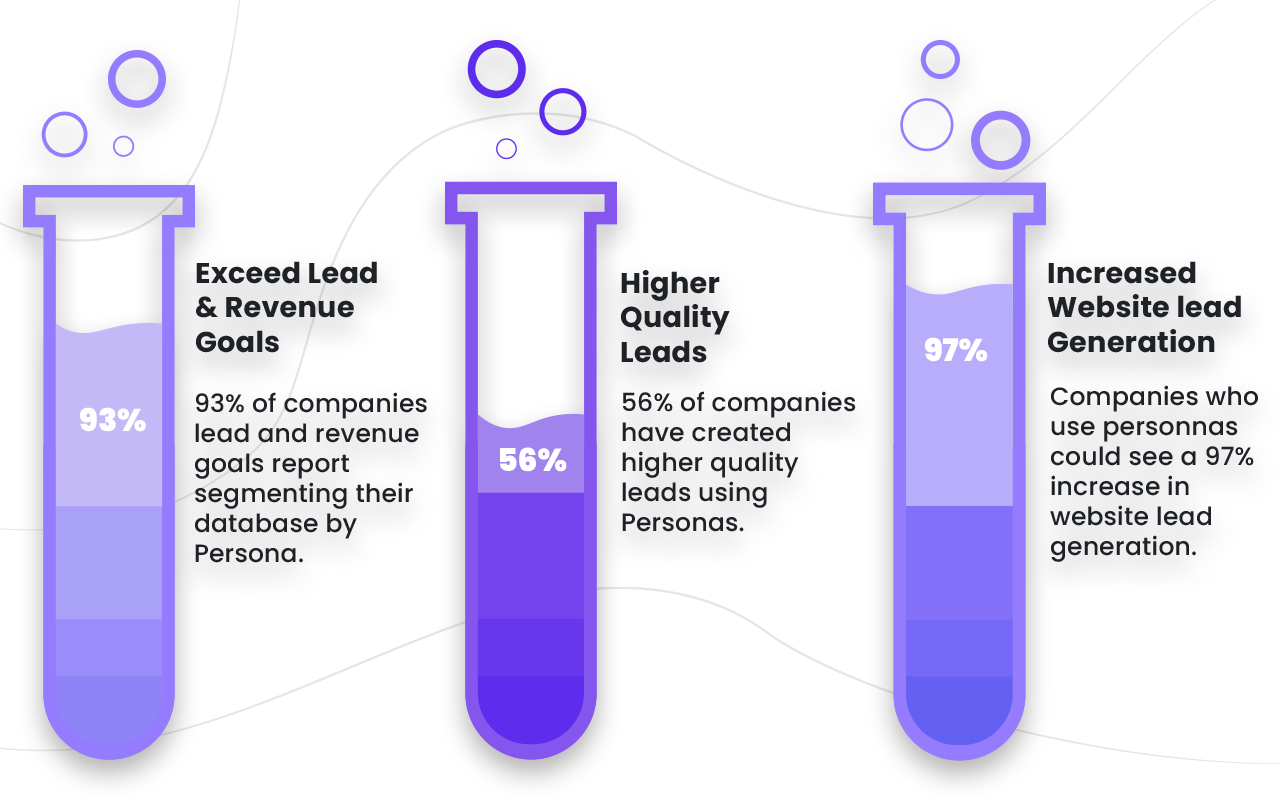
Develop Email List:
Maintaining a Database is the most critical agenda to drive revenue. The emails of people added to your database could become your go-to customer in the future.
While creating and maintaining data through the organic method is possible, it drains most of our time and takes considerable effort to drive demand.
That’s precisely where Kipplo assists your B2B email marketing by providing you with precise and relevant contact information for profiles that can be added to your email list for future campaigns, saving much of your time with an increased appropriate data count.
Prioritize Drip Campaigns:
How about making customer retention more interesting? Yeah, drip campaigns are designed for the sole purpose of customer retention along with brand pitch.
They are pre-written automated messages sent to specific set of customers for a predefined period of time, it can be used to inform and nurture customers through the sales pipeline.
Instead of following up with each customers manually all the time, the drip campaigns saves time and labour to convey the message to the audience.
Examples: Offer Announcements, Welcome notifications, etc.
Cold Email Approach:
Cold emailing is the “cat on the wall” tactic in B2B Email Marketing. It could pay off with much gravity if it’s used in the proper manner and content.
It is approaching potential and relevant contacts for the first time without having a prior contact. It may seem inappropriate, but as far as you approach the right audience to solve their problem. It sure has better results.
Tracking Results:
Tracking your campaign performance is as important as initiating the campaigns. You need to track the key performing metrics and analyze them for better optimization of your existing campaigns.
Analyzing the success parameters, realizing what went well, and accepting what went wrong in the campaigns shapes you to better yourself in future campaigns.
It will be complicated to track records without SMART
- Specific: Define a specific and clear goal
- Measurable: Ensure you track and measure your progress
- Attainable: Stick on to reality, and create a realistic goal
- Relevant: Make sure your goals align with the organization
- Timely: Mark your target date to be accountable and productive.
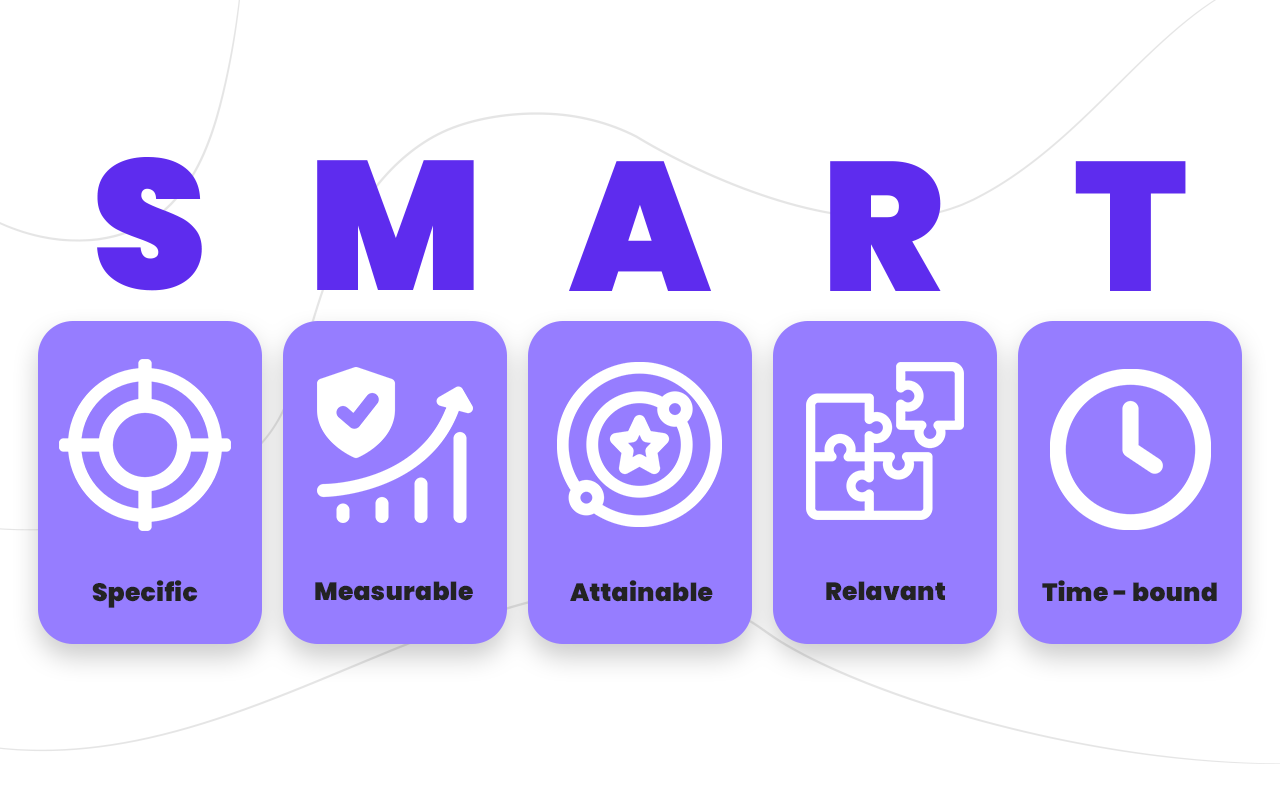
Here are some best practices in the field of B2B Email Marketing:
Email Length:
According to HubSpot, The optimal email length is 50 to 130 words. However, there are no restrictions for adding and eliminating words. All that matters in the mail is the brief content that brings results.
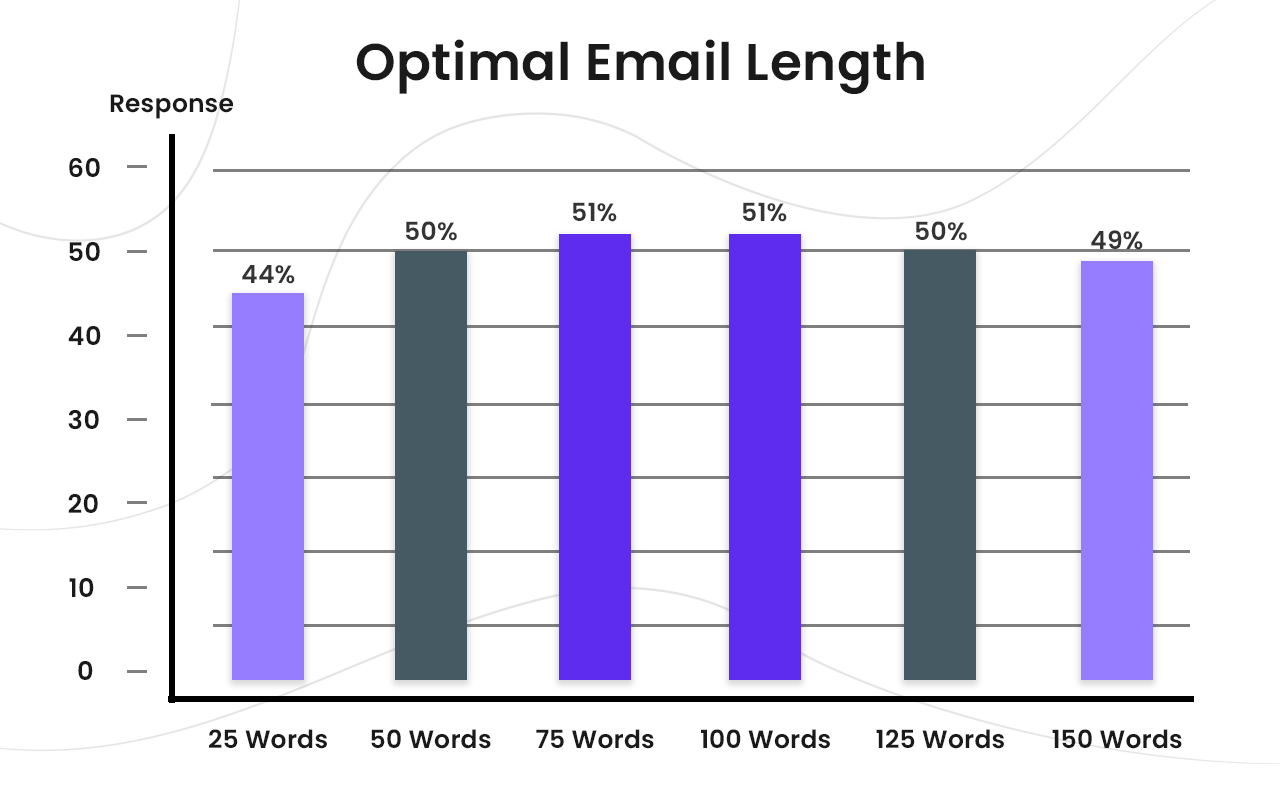
Personalization:
Emails can be customized according to the target audience, and the format can be changed based on the results it gets from each campaign so that it can be tailored accordingly in the upcoming campaigns.
Segmentation:
Classifying your email list by industry, job title, and location will assist you in creating more precise and target-based content that resonates with your audience.
Clear subject lines:
Subject lines give the first impression of your email, so maintaining it as the best impression improves the CTR and open rate. Try avoiding using clickbait or wrong subject lines.
Value Sharing:
Audiences always love the feeling of getting the right deal and saving bucks, so providing value such as discounts, coupons, whitepapers, and early access to sales will make them feel valued and improve your brand reputation and reach.
Call-to-action:
The call-to-action (CTA) in your email is the entry gate to your customers’ journey. It is a button that guides the user to your website or a link to download a resource from your site. So keep it short and crisp.
Test and optimize:
Going for A/B testing and improving the campaign after a successful run could assist you in owning the success factor of the campaign and gives you an idea of how to drive the results at different stages and season; this testing optimizes the campaigns as well.
Avoid spam fillers:
Avoid the usage of spam fillers such as “buy now,” “free,” and “limited time only”. It could not turn as you expect and might trigger getting spammed. Also, make sure that the emails that you send are CAN-SPAM compliant.
As reported by Emailtooltester, The channel through which people receive the highest spam count is email, with 49%.
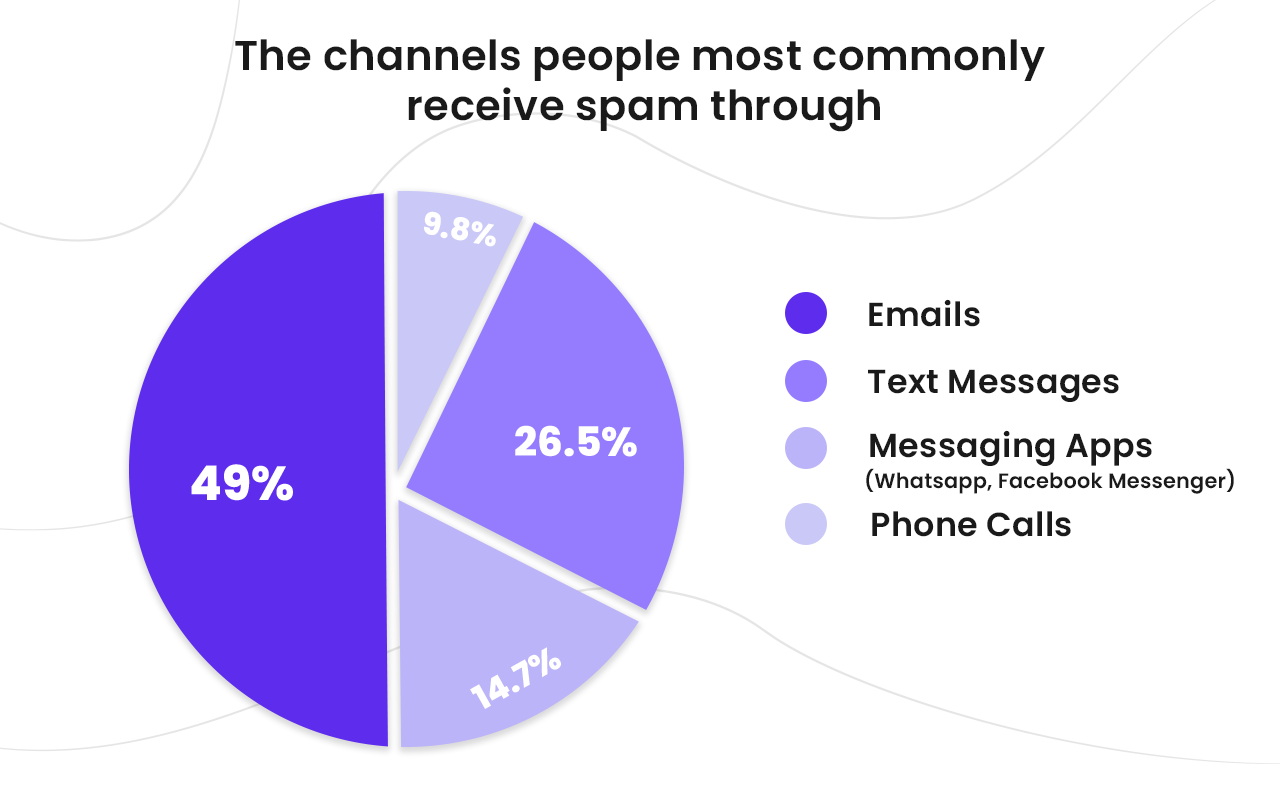
Conclusion:
B2B Email Marketing is the process of promoting your product or service to other business via email. The motto of it includes brand awareness, lead nurturing, customer relationship and lead retention.
This type of marketing can be used in all three of the sales funnel, i.e., Top of the funnel (TOFU), Middle of the funnel (MOFU), Bottom of the funnel (BOFU) for sale process and lead generation. Examples of it includes Cold mails, Personalized offers for target audience, and Welcome mail.
B2B Email reaches the decision maker’s inbox in the format of Newsletters, Posters, Brochures, Value proposition document, and etc., and brings greater ROI compared to other practices.
Now you’ve learned what B2B Email Marketing is and how it works, it might’ve resolved all your questions. Yes, you are all set to run email campaign to generate revenue for your firm!
For assistance and maximum yield, you would need data prospecting kit like Kipplo that makes your Email Marketing campaign easier and provides you with the relevant data of your targeted audience through which you can generate revenue and prosper further in your path.
FAQs
How frequently should you send out B2B marketing emails?
Though the frequency solely depends on Business, audience, goals, etc. On average, B2B Companies send out one email marketing campaign every 25 days.
What is the ideal B2B Email Length?
If that comes in B2B realm, a rigid and productive B2B email length would be 50-130 words and has a success rate of 50%. The average open rates lie between 25-30% depending upon the industry.
Which metrics are important to measure the success of my B2B email campaigns?
The vital metrics that measure B2B Email Campaigns are Open Rates, CTR, Conversion Rate, Bounce rate, Click-to-open rate.

